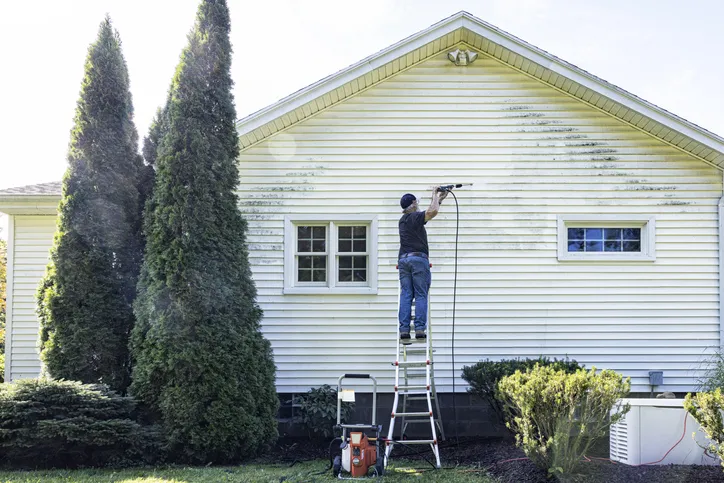Renting a home should be a straightforward process, but current housing trends are causing quite the stir among renters across America. The frustrations of dealing with ever-changing market conditions, policies, and unforeseen circumstances are leaving many tenants feeling more vulnerable than ever. From skyrocketing rents to unpredictable market shifts, let’s dive into 14 housing trends that have renters everywhere clutching their leases a little tighter in fear of potential homelessness.
1. Rent Prices Are Soaring to New Heights

In recent years, rent prices have seen an unprecedented rise, leaving many renters scrambling to make ends meet. It’s not just the big cities that are affected; mid-sized towns and suburbs are feeling the pinch, too. Many renters have reached out to express their frustration and concern over how these escalating costs are impacting their lives. According to a recent report by CNBC, rent prices are expected to continue climbing, exacerbating the affordability crisis. This increase is primarily driven by a lack of housing supply, inflation, and increased demand as more people move away from densely populated urban centers. For those who have already been struggling to pay their current rent, these hikes spell out an uncertain future.
Not only are the rent increases a financial burden, but they also bring about emotional stress. Families are faced with the tough decision of relocating, sometimes to less desirable neighborhoods, just to find a place within their budget. For some, this means uprooting children from schools and leaving behind supportive communities. The fear of eventual homelessness is a reality they face if prices continue on this upward trajectory. As a result, many communities are calling for more affordable housing initiatives to combat this alarming trend.
2. The Shortage of Affordable Housing Is Staggering

The housing crisis in America isn’t just about high prices—it’s also about the severe lack of affordable housing options. Many areas have seen a dearth of new affordable housing projects, further complicating the lives of low- and middle-income renters. Developers often focus on high-end properties due to higher returns on investment, leaving a gaping hole in the availability of affordable units. This shortage has created a competitive and cutthroat rental market where finding an affordable place is like striking gold. The National Low Income Housing Coalition reports a shortfall of millions of affordable rental homes for extremely low-income households.
This shortage has also resulted in intense competition among renters, driving up prices even more. The demand far exceeds the supply, forcing many tenants into bidding wars just to secure a lease. Those unable to compete are often left with few options, sometimes resulting in homelessness. The scarcity of affordable housing amplifies the urgency for policy changes and new developments focused on low-income families.
3. The Rise of the Corporate Landlord

Increasingly, individuals and families are finding themselves up against corporate landlords rather than traditional individual property owners. Corporations and investment firms have been buying up properties en masse, often outbidding potential homebuyers and driving up property values in the process. According to The Guardian, this trend has significant implications for the rental market, as these corporate landlords are often more profit-driven. This shift is resulting in less personal interaction and flexibility for tenants, who may find it harder to negotiate lease terms with a faceless corporation.
Renters are concerned about the lack of a personal touch and understanding when dealing with corporate landlords, who are often perceived as being less empathetic to individual circumstances. Maintenance and repair issues can take longer to address, and there may be stricter penalties for late payments, leading to additional stress for tenants. As these corporations continue to dominate the market, the future of renting could mean fewer protections and higher costs for tenants. Renters are voicing their dissatisfaction and calling for regulations to ensure fair treatment and maintain affordable housing options.
4. Eviction Rates Are Alarmingly High

Despite moratoriums and assistance programs during the pandemic, eviction rates have remained worryingly high. Many renters are still struggling to recover financially after periods of unemployment or underemployment. Once eviction protections were lifted, a wave of legal proceedings swept over countless renters who were unable to catch up on back rent. The emotional and financial toll of evictions is devastating, leading to homelessness and further economic hardship. The legal system’s complexity often leaves renters confused and without the representation they need.
Evictions don’t just displace families; they also have broader social implications, disrupting children’s education and community ties. For renters who have faced eviction, finding a new place to live is incredibly challenging due to the stigma associated with having an eviction on record. This trend highlights the need for more compassionate eviction processes and support systems for tenants facing financial difficulties. Advocates are pushing for policies that provide better safety nets and prevent unnecessary evictions.
5. The Impact of Short-Term Rentals on Housing Availability

The rise of short-term rental platforms like Airbnb has transformed the housing landscape significantly. While these platforms provide lucrative opportunities for property owners, they also contribute to reducing the availability of long-term rental properties. Investors often buy up residential properties solely for short-term rentals, effectively shrinking the pool of available long-term housing. This trend has led to increased rents and a housing shortage in many popular tourist destinations, where local renters are being priced out of their communities.
The impact on local neighborhoods is profound, with some areas experiencing a decline in community cohesion and an increase in transient populations. Renters who once called these neighborhoods home are forced to relocate to less desirable areas, away from their jobs and support networks. This dynamic further complicates the rental market and exacerbates existing housing issues. Some cities are now implementing regulations to limit the number of short-term rentals in an effort to restore balance and prioritize long-term housing needs.
6. Gentrification Continues to Push Out Long-Term Residents

Gentrification is a buzzword that’s been around for decades, but its effects are more palpable than ever for long-term residents of many urban areas. As once-neglected neighborhoods undergo revitalization, property values and rents skyrocket, displacing the communities that have lived there for generations. The aesthetic and economic changes brought by gentrification can be positive, but they often come at the cost of increased living expenses for existing residents. This trend leaves many renters with no choice but to move to more affordable areas, disrupting their lives and breaking community bonds.
For those who remain, the cultural shift can be alienating, with new businesses and residents often catering to a different demographic. This process can create tensions between long-standing residents and newcomers, as well as disparities in wealth and resources. The pressures of gentrification highlight the need for policies that protect tenants’ rights and ensure they can benefit from neighborhood improvements without being forced out. Advocates are working to foster development that includes affordable housing options and preserves the character of communities.
7. Unpredictable Utility Costs Add to Financial Strain

Renters are finding that unpredictable utility costs are becoming another source of financial strain, making it difficult to budget effectively. With energy prices fluctuating and water bills climbing, these essential expenses can be just as daunting as rent increases. Many renters are shocked by the disparity in utility costs from month to month, often resulting in unforeseen financial burdens. This trend adds complexity to managing household finances, especially for those on fixed or limited incomes.
The lack of control over utility expenses leaves renters feeling powerless, as they have little influence over rates set by utility companies. Some renters have advocated for landlords to incorporate utilities into rent, providing more predictability and stability in monthly expenses. However, this practice is not widespread, leaving many tenants to fend for themselves. As utility costs continue to rise, renters are calling for more transparency and assistance programs to help mitigate these unpredictable expenses.
8. The Cost of Moving Keeps Rising

For renters, moving is already a challenging and stressful endeavor, but the rising costs associated with relocating have added another layer of difficulty. From hiring movers to paying for packing supplies and security deposits, the expenses quickly add up. Many renters are finding that the cost of moving is becoming prohibitively expensive, limiting their ability to relocate to more affordable areas or better living situations. This trend is particularly concerning for those who need to move for job opportunities, family reasons, or due to evictions.
The financial burden of moving often forces renters to make tough choices, such as downsizing or taking on additional debt. In some cases, renters delay moving altogether, remaining in unsuitable living conditions simply because they can’t afford the associated costs. This trend underscores the need for policies and programs that support renters in transition, providing financial assistance and resources to ease the process. As the cost of living continues to rise, addressing the expenses of moving is becoming an increasingly important issue for renters nationwide.
9. Rental Application Fees Are Out of Control

For many renters, applying for a new home comes with the unwelcome addition of excessive application fees. These fees can range widely, often without any guarantee of securing the rental, making them a frustrating expense. As the rental market becomes more competitive, landlords and property management companies are charging higher fees, sometimes collecting applications from multiple prospective tenants without clear policies on refunds. This practice has led to a financial burden on renters, who may pay hundreds of dollars just to apply for a rental they ultimately don’t get.
The lack of regulation around application fees has prompted calls for change, with renters advocating for fairer practices and transparency. In some states, legislation is being introduced to cap application fees and require refunds if an application is not processed. This trend highlights the need for renters to be informed about their rights and for more oversight in the rental application process. With the demand for rental units high, ensuring a fair and transparent application process is essential for protecting renters’ interests.
10. Rising Insurance Costs Add to Renters’ Woes

Renters insurance, once considered an optional safeguard, has become another rising cost that tenants must factor into their housing expenses. Many landlords now require renters to carry insurance, adding to renters’ financial burdens. The cost of renters insurance has been steadily increasing, driven by factors such as natural disasters and higher property values. For renters on tight budgets, these additional costs can stretch finances even thinner, making it challenging to afford other necessities.
Despite the added expense, renters insurance provides critical protection against unforeseen events, such as theft or fire. However, not all renters are aware of the coverage details, and some may end up overpaying for policies that don’t meet their needs. This trend underscores the importance of educating renters about their insurance options and ensuring they select appropriate coverage. As insurance costs continue to rise, tenants are advocating for more affordable options and clearer communication about policy benefits.
11. The Student Debt Crisis Affects Housing Choices

The ongoing student debt crisis is having a significant impact on housing choices for younger renters, who are often saddled with substantial loan repayments. This financial burden limits their ability to afford higher rents or accumulate savings for a down payment on a home. For many, the dream of homeownership remains out of reach, leaving them reliant on the rental market for longer periods. The need to balance student loan payments with rent puts additional pressure on monthly budgets, forcing some to choose less desirable living arrangements to stay afloat.
The ripple effect of student debt extends beyond monthly expenses, affecting credit scores and the ability to qualify for rental agreements or loans. Renters burdened by debt face challenges in securing housing, as landlords may view them as higher-risk tenants. This trend highlights the interconnectedness of financial issues and the need for comprehensive solutions that address both student debt and housing affordability. As policymakers grapple with potential reforms, renters are advocating for measures that offer relief and create a more stable housing environment.
12. Aging Infrastructure in Rental Properties

Renters across the country are facing challenges related to aging infrastructure in older rental properties. Many of these buildings suffer from outdated systems, leading to frequent maintenance issues and increased utility costs. Tenants often find themselves dealing with leaky pipes, faulty wiring, and inefficient heating or cooling systems. These problems not only affect the quality of life but also add unexpected expenses, as renters may have to cover repairs or endure higher energy bills due to inefficient systems.
The lack of investment in updating these properties leaves renters frustrated and calls into question the responsibility of landlords to maintain safe and livable conditions. Advocacy groups are pushing for regulations that ensure landlords make necessary upgrades and provide transparency about property conditions. This trend underscores the importance of tenant rights and the need for policies that hold property owners accountable. As more renters express their dissatisfaction, there’s a growing call for a balanced approach that protects tenants while supporting landlords in making necessary improvements.
13. The Burden of Security Deposits

For renters, security deposits are often one of the most significant upfront costs when moving into a new place. While these deposits are intended to protect landlords from potential damages, they can pose a financial challenge for tenants. The requirement for a hefty deposit—sometimes amounting to several months’ rent—limits renters’ ability to save for other expenses, such as moving costs or emergency funds. This financial strain can be particularly challenging for those on tight budgets or with limited savings.
Some renters have raised concerns about the fairness of security deposit deductions, as disputes can arise over what constitutes normal wear and tear versus damage. The lack of standardization in deposit policies has led to calls for reform, with renters advocating for clearer guidelines and protections. In response, some jurisdictions are exploring alternatives, such as security deposit insurance or installment plans, to ease the burden on tenants. As the conversation around security deposits evolves, renters are seeking more equitable solutions that balance the interests of landlords and tenants.
14. The Challenge of Finding Pet-Friendly Rentals

For pet owners, finding a rental property that accommodates their furry family members can be a significant hurdle. Many landlords impose strict pet policies, including breed restrictions, weight limits, or additional fees, making it difficult for renters with pets to secure housing. The scarcity of pet-friendly rentals often leads to higher competition and rent prices, leaving some pet owners with limited options. This trend is particularly concerning for those who consider their pets as essential companions for emotional and mental well-being.
Renters have expressed frustration over the lack of consistency in pet policies, as some landlords may allow pets but impose exorbitant pet deposits or monthly fees. The desire for more inclusive and transparent pet policies has led to advocacy efforts aimed at increasing the availability of pet-friendly housing. Some property owners have responded by recognizing the benefits of catering to pet-owning renters, but progress remains slow. As pet ownership continues to rise, the demand for accommodating rental properties will only grow, highlighting the need for more balanced and accessible housing options for pet lovers.
This article is for informational purposes only and should not be construed as financial advice. Consult a financial professional before making investment or other financial decisions. The author and publisher make no warranties of any kind.








